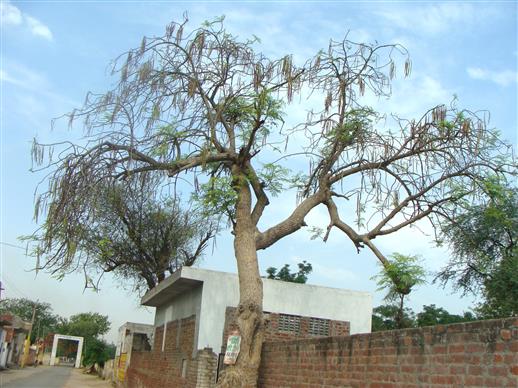MORINGACEAE
Large deciduous tree with gummy bark and soft wood. Leaves large, alternate, 2-3 pinnate, glabrous to puberulent; pinnae and pinnules imparipinnate, opposite; leaflets opposite, entire; stipules and stipulules absent; pinnae and pinnules often with stipitate glands at base. Inflorescences axillary panicles, hairy. Flowers large, usually white, zygomorphic, bisexual, hypogynous. Sepals 5, united forming a tube or cup borne on a very short hypanthium, 5- cleft; lobes unequal, petaloid, deciduous from above to base, imbricate, often reflexed at anthesis. Petals 5, free, unequal, posterior 2 smaller, laterals ascending, the anterior one the largest. Disc lining the calyx tube. Stamens inserted on the edge of the disc, declinate, 5 fertile opposite the petals, alternating with 5(-9) which are reduced to antherless filaments, filaments free, villous and thickened at base; anthers dorsifixed, monothecous, forming a head through which style protrudes at dehiscence. Carpels 3, syncarpous; ovary oblong, stipitate, unilocular with 3 parietal placentas, ovules numerous in 2 series; style 1, tubular; stigma truncate, perforated in the centre. Capsule elongated, beaked, 3-6-angled, 1-celled, loculicidally 3-valved. Seeds many, large, in pits in valves. Testa corky, winged or not.
1 genus and 13 species
